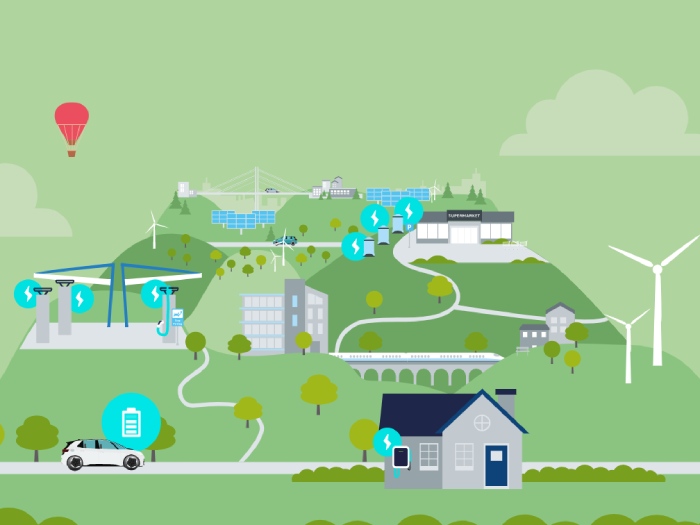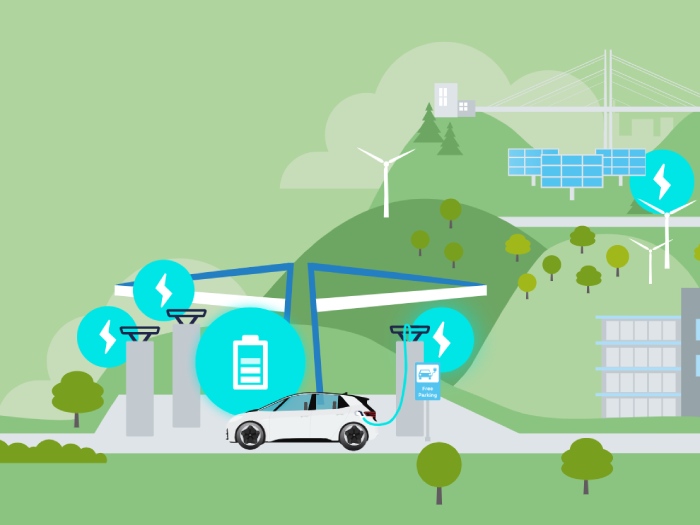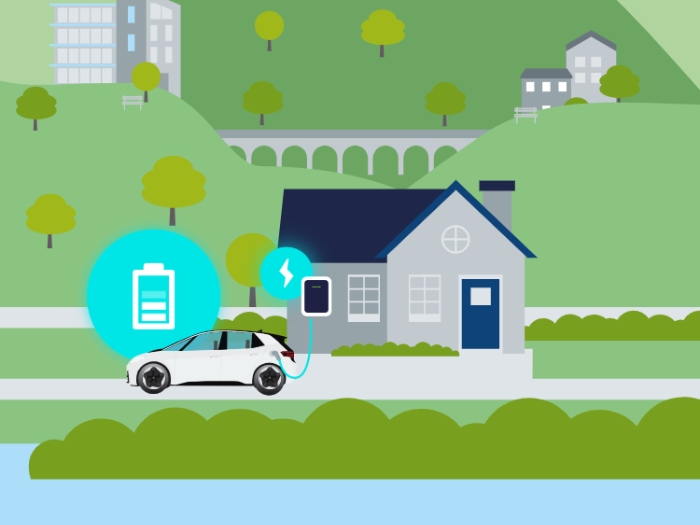Charging electric cars: here is what the near future holds
How will we charge our cars in the future? Martin Roemheld, Head of Business Development and Investment Management at Volkswagen Group energy subsidiary Elli, lays out the possible scenarios for the next few years, with a particular focus on public charging in both urban and rural areas.

For decades, refuelling our cars has always looked the same, namely going to the petrol station, but this is destined to change by 2025. Currently, 80% of electric car drivers charge their cars at home or at work, a procedure that requires owning your own wallbox. “My vision for 2025 is that everyone will be able to drive electric, even and especially without their own personal charging point,” says Martin Roemheld, Head of Business Development and Investment Management at Volkswagen Group energy subsidiary Elli.
“For one thing, we will have cars with longer ranges and greater charging capacity,” Roemheld continues. “And the charging infrastructure will be better developed.” Fifteen minutes will be enough to add enough range to be able to drive in cities without a personal charging point and with one or two charges per week without any problems.”
Charging stations
“The charging station, as it is today, works very well and can cover lots of use cases well, but in the near future additional technologies will be incorporated to provide greater convenience for customers: robotic charging and inductive charging,” Roemheld continues. With robotic charging, the charging station makes its way to your car and you don’t have to spend time looking for an available charging point in a large car park, for example.
With inductive charging, on the other hand, you no longer need a connection, because the car receives power via a charging plate in the ground, like with wireless smartphone chargers. “Using this technology will require cars to be upgraded, however. Currently, there is incredible competition when it comes to concepts, particularly from the start-up sector, but none of them have managed to become standard yet,” Roemheld clarifies.
Urban and rural areas

In rural areas, the situation changes: here people have the option of setting up their own charging points in their homes, but of course they are private, and so there is scope to intervene in terms of the public infrastructure. From this point of view, it is important to install sufficient rapid charging stations to close the gap in the areas where the market hasn’t taken off yet.
Roemheld highlights the importance of rapid charging parks. “They’re key, because they offer infrastructure that is quick and easy to access, and the driver is highly likely to have a free charging point due to the high turnover. This means no long waiting times. In cities, these will take up a relatively small area of land, which is even close to zero if petrol stations are repurposed as charging parks.”
Service stations

“Service station operators, in particular, are interested in this model, since people charging their cars stay longer than when refuelling, meaning they have more time to go shopping,” Roemheld adds, before going on to talk about the power supply. The charging parks are connected to what is known as a medium-voltage supply, which runs at a voltage above that at which households are supplied with power. Significantly more power is available here than in the low-voltage network – and the power is cheaper, too.
“In conclusion, the charging park model is extremely attractive from the perspective of all stakeholders, but electric mobility only makes sense if it is run using renewable energy. This is why we need a systematic energy revolution in Europe,” Roemheld points out.
Bidirectional charging

Volkswagen will start producing cars with bidirectional charging from 2022, a real technological leap. “I like to compare this to the first cameras on mobile phones. Initially, they weren’t really any better than digital cameras. But in the years that followed, more and more business models built on the principle, such as Instagram, for example, leading to their rapid improvement. I think that bidirectional charging will be similar: cars can now discharge energy, provide emergency power, charge another car,” Roemheld explains, adding that thanks to this technology, totally new business models will be developed in the next ten years.
“We are currently building cars which can store up to 80 kWh; a six-person household uses around 8-10 kWh of energy a day. This means that I could use the energy that the car has on board to supply my household for up to six days and still drive 100 km,” Roemheld concludes.
Source: Volkswagen - Shaping Mobility Hub
VGI | Responsible O.U.: VP | Creation date: article date | Class 9.1
